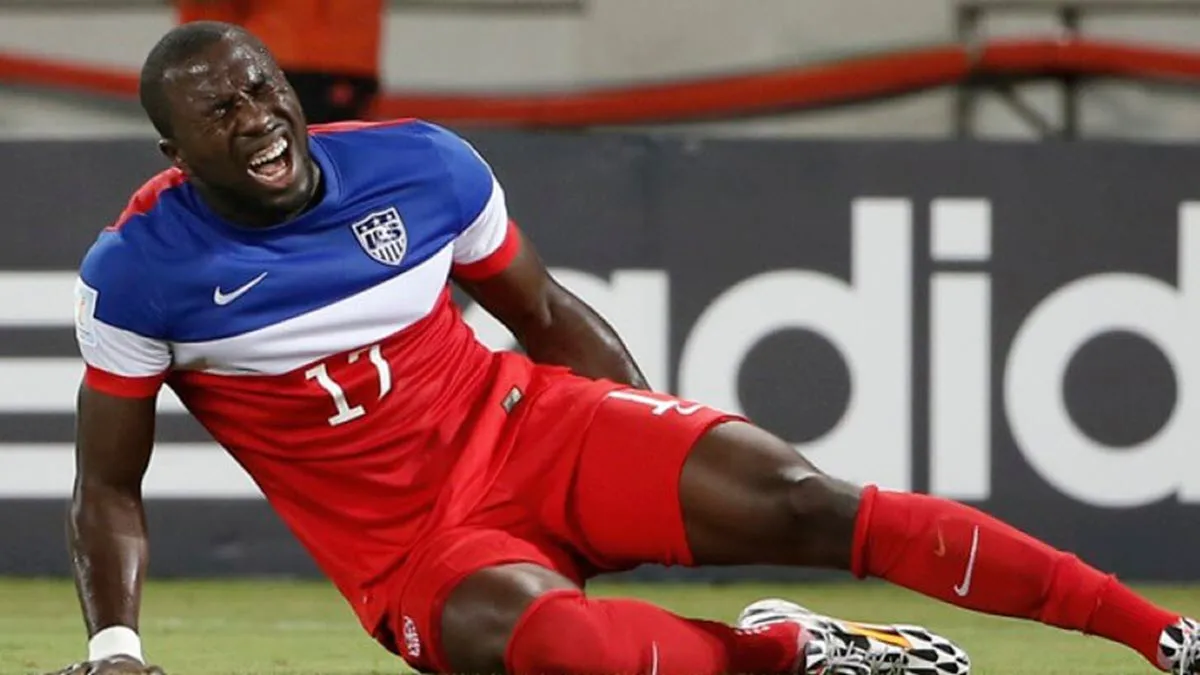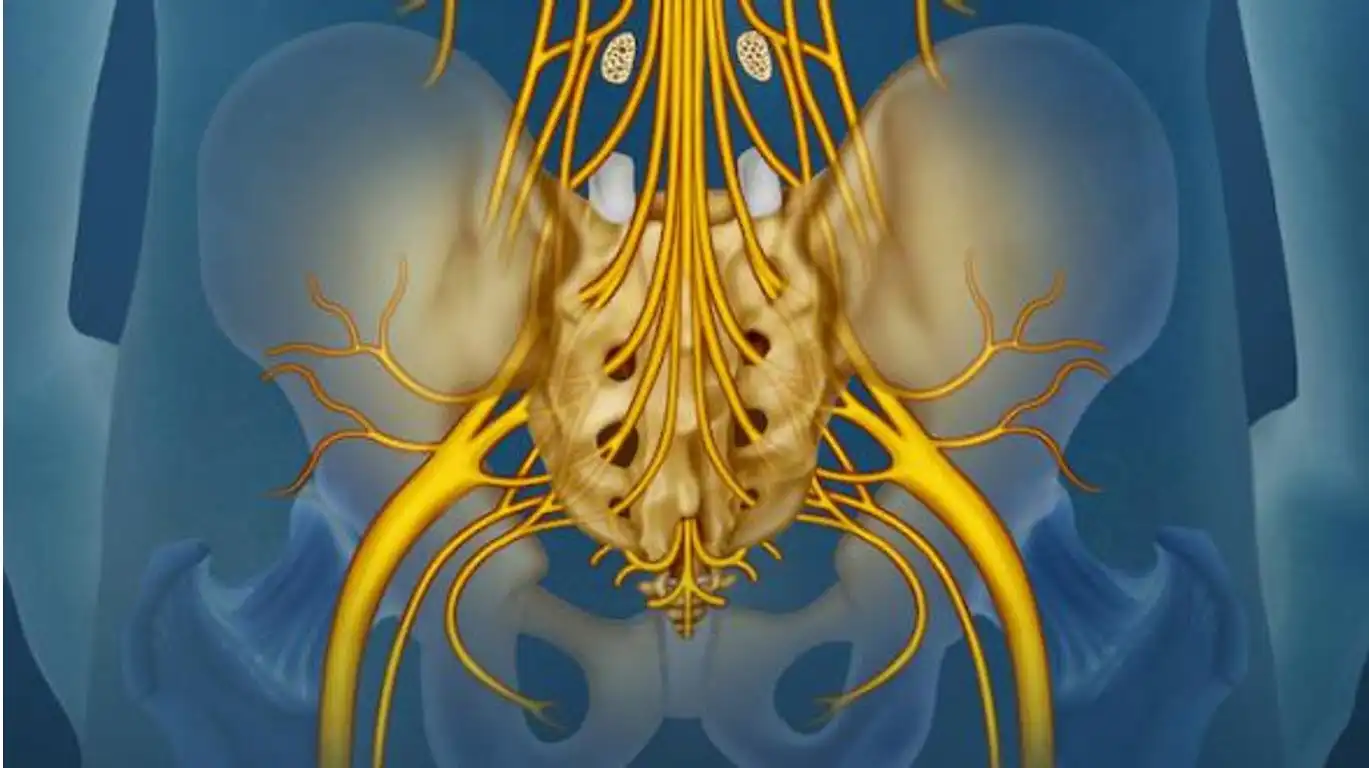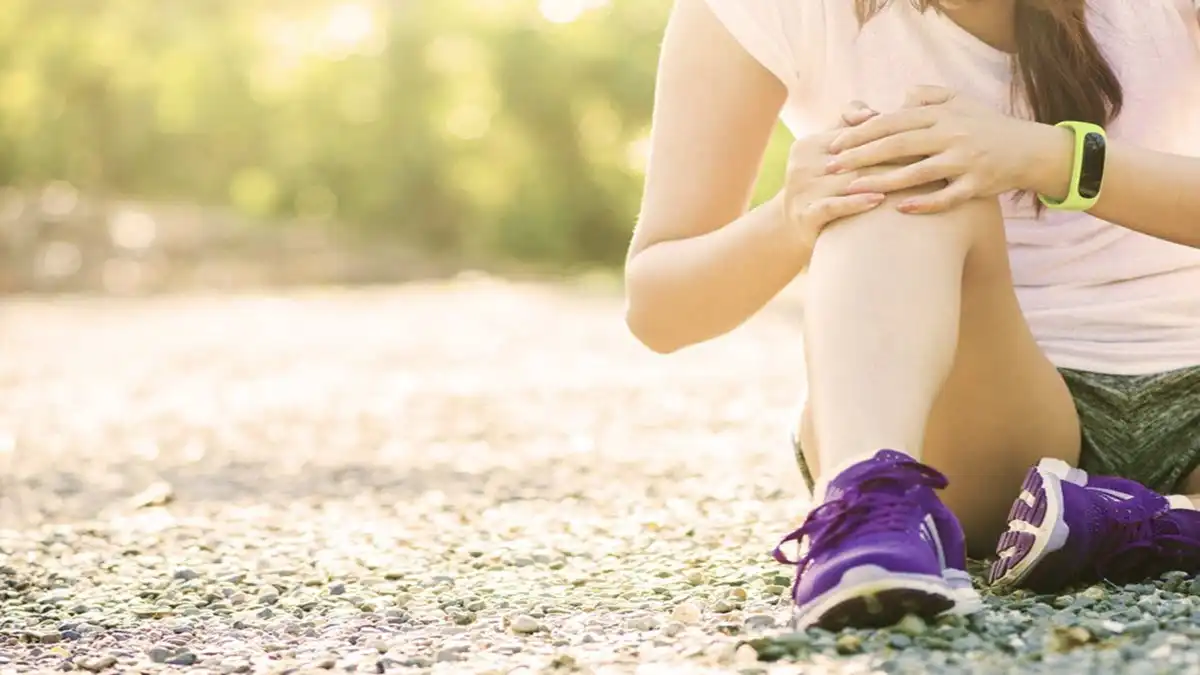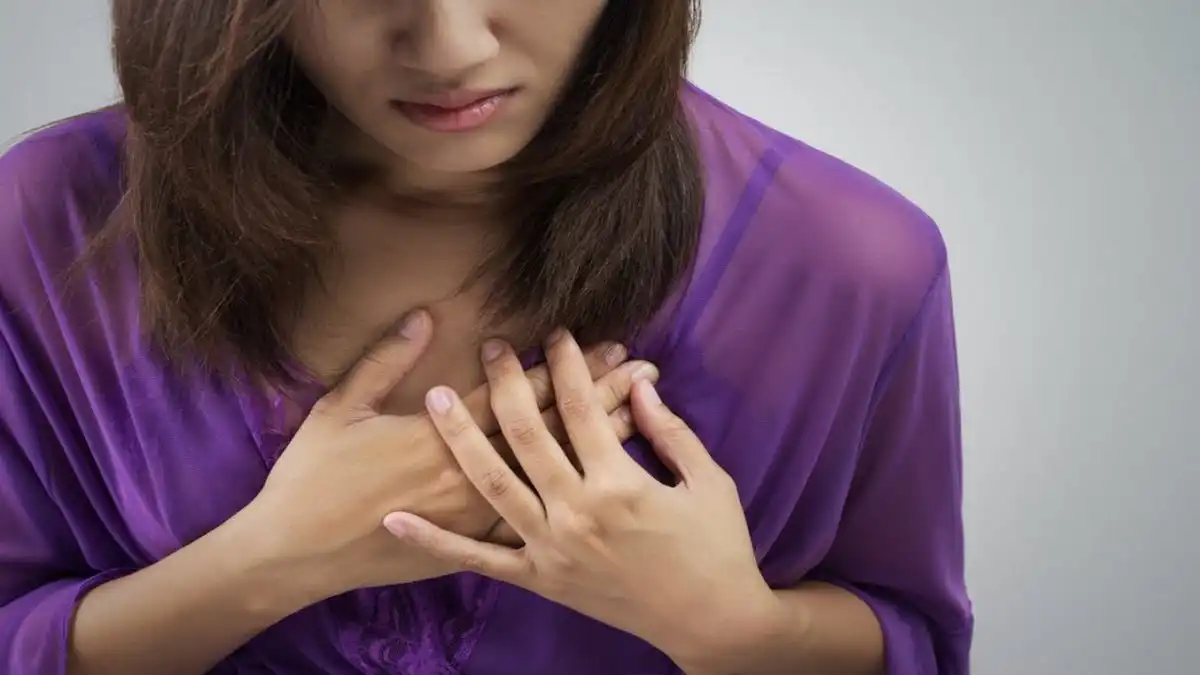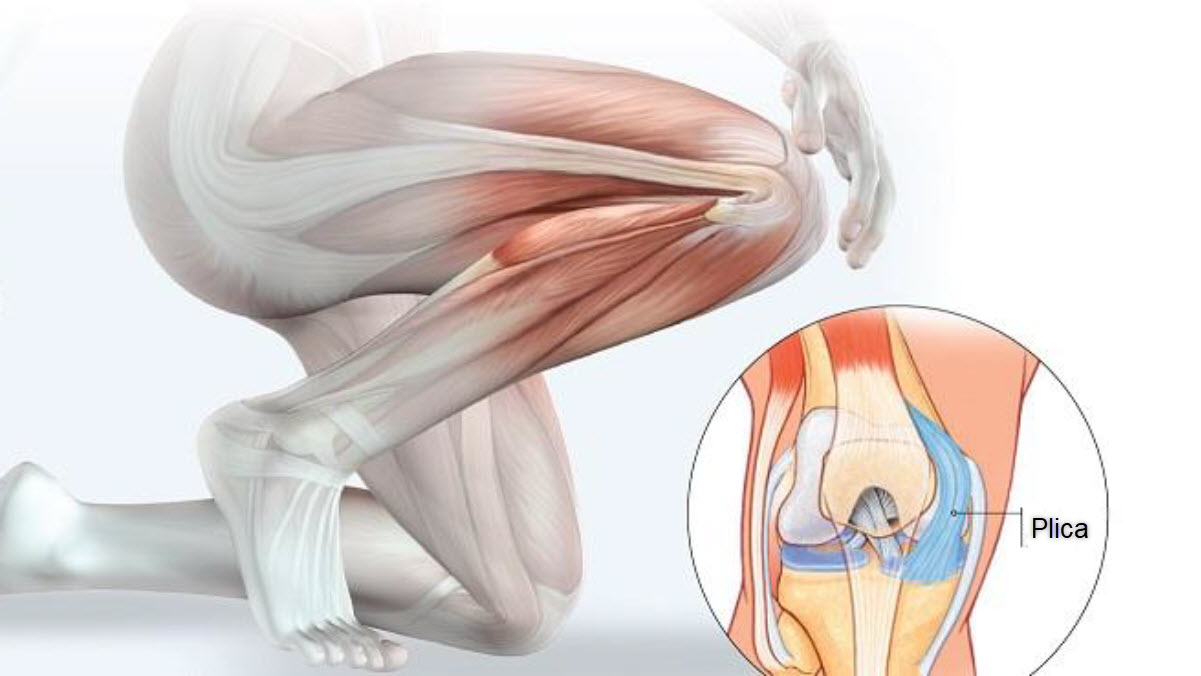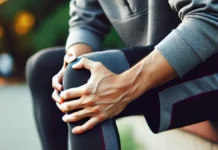Introduction
Overview of Soccer’s Risks and Rewards
Soccer, known as the beautiful game, captivates millions around the world with its blend of skill, strategy, and athleticism. As a sport that demands agility, speed, and precision, it offers players a chance to excel physically and mentally while fostering teamwork and discipline. However, the intensity and physical demands of the game also bring inherent risks. From sudden directional changes to player collisions, soccer is rife with scenarios that can lead to injury.
Understanding these risks is essential for players, coaches, and parents alike. Awareness of the most common injuries not only helps in their prevention but also ensures appropriate response and recovery when they occur, allowing athletes to enjoy the game safely and for longer.
Why Understanding Injuries Matters
Injuries, while often unavoidable, can have a profound impact on an athlete’s physical health, performance, and even emotional well-being. A sprained ankle or strained muscle might temporarily hinder performance, but repeated or improperly treated injuries can lead to chronic issues that affect long-term participation in the sport.
By understanding the causes, prevention strategies, and treatment options for common soccer injuries, players can take proactive steps to protect themselves. This knowledge not only minimizes downtime but also empowers players to make informed decisions about their health and career in soccer, ensuring they enjoy the rewards of the game while mitigating the risks.
The Five Most Common Injuries in Soccer
Soccer is a physically demanding sport requiring agility, speed, and coordination, making players susceptible to a variety of injuries. Understanding the most common injuries and how to prevent them is essential for players and coaches alike. Below, we delve into the five most prevalent soccer injuries, their causes, and prevention strategies.
Ankle Sprain
Causes and Mechanisms Ankle sprains are among the most frequent injuries in soccer, often resulting from sudden twists, turns, or awkward landings. These movements can overstretch or tear the ligaments stabilizing the ankle. Poor field conditions, inadequate footwear, and previous injuries increase the risk of sprains.
Prevention Strategies Strengthening exercises targeting the ankle, such as resistance band work, can enhance stability. Balance training, like using a wobble board, helps improve proprioception and reduces the likelihood of missteps. Wearing well-fitted cleats and taping or bracing vulnerable ankles also provide additional support. Pre-game warm-ups focusing on dynamic stretching prepare the joints for intense movements.
Knee Tendonitis
Overuse and Inflammation Knee tendonitis, or patellar tendinopathy, arises from repetitive strain on the knee tendons, particularly during jumping, sprinting, and abrupt stops. The constant stress leads to microtears and inflammation, causing pain and stiffness around the kneecap.
Prevention and Recovery Players can minimize the risk by strengthening the quadriceps and hamstrings, as balanced muscle development reduces pressure on the knee. Stretching before and after games maintains flexibility. Limiting training intensity and incorporating rest days allows the tendons to recover. If symptoms arise, early intervention with ice, anti-inflammatory measures, and physiotherapy can prevent worsening.
Muscle Strains
Vulnerable Muscle Groups Muscle strains commonly affect the hamstrings, quadriceps, and groin. These injuries occur when a muscle is overstretched or subjected to a sudden force, often during high-speed sprints, abrupt direction changes, or overextension during kicks.
Effective Warm-Up and Stretching A proper warm-up routine, including dynamic movements like lunges and high knees, increases blood flow and prepares muscles for activity. Post-game static stretching improves flexibility and reduces residual tension. Regular strength training focusing on the core and lower body enhances muscle resilience, decreasing the risk of strain.
Fractures
Types and Causes Fractures, though less frequent, are severe injuries in soccer. They often result from high-impact collisions, falls, or being struck by the ball. Common sites include the tibia, fibula, and metatarsals. Stress fractures may also develop from repetitive overload without sufficient recovery.
Protective Measures Wearing appropriate shin guards reduces the risk of direct trauma to the lower leg. Monitoring training loads and ensuring players receive adequate rest can prevent stress fractures. Encouraging proper technique during tackles and teaching players how to fall safely minimizes the chance of fractures caused by collisions.
Concussions
Symptoms and Immediate Actions Concussions occur when a player sustains a blow to the head, often from heading the ball improperly, collisions, or falls. Symptoms include dizziness, headache, confusion, nausea, and sometimes loss of consciousness. Prompt recognition and removal from play are crucial to prevent further harm.
Long-Term Management Managing concussions requires a stepwise approach to recovery. Rest and avoiding physical or cognitive exertion are essential in the initial stages. Gradual reintroduction to activity under medical supervision ensures full recovery. Educating players about proper heading techniques and enforcing strict concussion protocols are vital preventive measures.
In conclusion, understanding these common injuries and implementing proactive measures can significantly reduce their occurrence, ensuring players stay healthy and perform at their best.
Anatomy Insights
Anatomy of an Ankle Sprain
Structure of the Ankle
The ankle joint is a complex hinge joint designed to support body weight and enable movement. It is formed by the articulation of three bones: the tibia, fibula, and talus. Stability is provided by a combination of bony architecture, ligaments, tendons, and muscles.
- On the medial (inner) side, the deltoid ligament complex is a thick, strong group of ligaments that resists eversion and is rarely injured in ankle sprains.
- On the lateral (outer) side, the anterior talofibular ligament (ATFL), calcaneofibular ligament (CFL), and posterior talofibular ligament (PTFL) are thinner and more prone to injury.
The ATFL is particularly vulnerable because it stabilizes the ankle during plantarflexion and inversion—movements commonly associated with ankle sprains. The CFL is affected in moderate-to-severe sprains, while the PTFL is rarely injured. Surrounding tendons, such as the peroneal tendons, provide dynamic stabilization during movement.
Ligaments Most Affected
The ATFL is the most frequently injured ligament, accounting for over 80% of lateral ankle sprains. High inversion forces, particularly during rapid direction changes or uneven surfaces, stretch and tear this ligament. Severe sprains can extend damage to the CFL and even the PTFL. In high ankle sprains, the injury involves the syndesmosis, a fibrous connection between the tibia and fibula, which causes prolonged recovery times.
Mechanics of Knee Tendonitis
Tendon Stress During Play
Knee tendonitis, or patellar tendonitis, is caused by repetitive stress on the patellar tendon, which connects the kneecap (patella) to the tibia. This condition is common in athletes who engage in activities involving frequent jumping, running, or sudden directional changes.
The patellar tendon absorbs and transmits the forces generated by the quadriceps muscles during movements like landing from a jump or accelerating quickly. Eccentric contractions, where the quadriceps lengthen under tension, place significant stress on the tendon. Over time, these forces create microtears in the tendon fibers, leading to inflammation and pain.
Role of Proper Technique
Proper technique plays a critical role in preventing knee tendonitis. Incorrect movement patterns or poor body mechanics can increase strain on the patellar tendon. Athletes can reduce the risk by:
- Practicing correct jumping and landing techniques to evenly distribute forces.
- Strengthening the quadriceps, hamstrings, and calves to enhance shock absorption.
- Maintaining flexibility through dynamic stretching to reduce tension on the knee.
Incorporating proper warm-up routines, gradual intensity progression, and rest between sessions can further prevent overuse injuries.
Prevention Strategies
Warm-Up Best Practices
Dynamic vs. Static Stretching
A proper warm-up is essential to reduce the risk of injuries in sports. Dynamic stretching, involving controlled movements that prepare muscles for activity, is highly effective in improving flexibility, increasing blood flow, and activating the nervous system. Examples include leg swings, walking lunges, and arm circles. These movements mimic the actions performed during play, enhancing readiness.
In contrast, static stretching, which involves holding a stretch for 20-30 seconds, is better suited for post-activity cooldowns. While static stretching can improve flexibility over time, performing it before activity may temporarily reduce muscle strength and explosiveness, making it less effective for injury prevention during warm-ups.
Soccer-Specific Drills
In soccer, warm-up routines should include drills that replicate game scenarios. Examples include:
- Passing and dribbling drills to activate lower body muscles and improve coordination.
- Short sprints and lateral movements to prepare for quick directional changes.
- Controlled shooting or tackling practice to increase neuromuscular engagement.
Incorporating agility ladders, cones, or small-sided games can make warm-ups engaging and sport-specific, further reducing injury risk.
Protective Equipment
Must-Have Gear for Safety
Using proper protective equipment is critical for minimizing the likelihood of injuries:
- Shin Guards: Essential for shielding the lower legs from impacts during tackles or collisions.
- Ankle Braces or Tapes: Provide additional stability for players prone to ankle sprains, particularly on uneven fields or after prior injuries.
- Mouthguards: Though less common in soccer, they protect against dental injuries during high-contact situations.
Choosing the Right Footwear
Footwear plays a vital role in injury prevention. Players should choose cleats that match the surface they play on:
- Firm Ground (FG): Suitable for natural grass fields.
- Soft Ground (SG): Designed for wet, muddy conditions.
- Artificial Ground (AG): Ideal for synthetic surfaces.
- Turf Shoes (TF): Best for hard turf or indoor fields.
Properly fitted shoes with adequate arch support and cushioning prevent blisters, ankle instability, and overuse injuries.
Managing Training Load
Avoiding Overtraining
Overtraining can lead to chronic injuries like tendinitis, stress fractures, or muscular strains. Players should monitor their training intensity, volume, and frequency to avoid excessive physical stress. Signs of overtraining include persistent fatigue, decreased performance, and soreness that doesn’t resolve with rest.
To prevent this:
- Follow a periodized training program that balances high-intensity sessions with recovery days.
- Limit back-to-back high-impact workouts and gradually increase training intensity.
Rest and Recovery Importance
Recovery is as crucial as training for optimal performance and injury prevention. This includes:
- Active recovery through light activities like walking or swimming.
- Sleep: A minimum of 7-9 hours per night to allow tissue repair and mental recovery.
- Hydration and Nutrition: Ensuring adequate water intake and consuming a diet rich in protein, healthy fats, and carbohydrates to fuel recovery.
Incorporating tools like foam rollers and massages can further reduce muscle soreness and promote circulation
Knee Tendonitis: Prevention and Treatment for Soccer Players
Prevention
- Proper warm-up: Before each training session or match, perform a dynamic warm-up to increase body temperature and improve flexibility of muscles and tendons.
- Muscle strengthening: Strengthen the muscles around the knee, with emphasis on the quadriceps, hamstrings and stabilizer muscles. A well-balanced strengthening program can help reduce the load on the tendons.
- Specific training: Incorporate soccer-specific exercises into your training program, emphasizing movements and loads that simulate game conditions.
- Stretching: Be sure to include regular stretching to keep muscles and tendons flexible. Focus on the muscles of your thighs, calves and quadriceps.
- Improving technique: Work on your playing technique to avoid excessive movement or unnecessary pressure on the knees. Proper techniques when shooting, dribbling and changing direction can help prevent injuries.
- Training load management: Avoid training overload, especially when restarting after a period of inactivity. Gradual progression and listening to the body are essential.
- Appropriate Footwear: Wear soccer shoes appropriate for your foot type and pitch type. Well-fitting shoes with good support can reduce pressure on the knee tendons.
- Rehydration and nutrition: Make sure you stay well hydrated, as dehydration can affect the flexibility of the tendons. A balanced diet supporting muscle health and recovery is also important.
Treatment
- Rest: Allow your knee some rest time to allow healing. Avoid activities that make the pain worse.
- Ice: Apply ice to the affected area to reduce inflammation. Use the RICE (Rest, Ice, Compression, Elevation) method for the first few hours after an injury.
- Compression: Use a compression bandage to reduce swelling around the knee.
- Elevation: Elevate your leg to help reduce swelling.
- Anti-inflammatory medications: Under the supervision of a healthcare professional, anti-inflammatory medications may be used to relieve pain and inflammation.
- Osteopathy: An osteopath can recommend specific exercises to strengthen the muscles around the knee, improve flexibility and aid recovery.
- Brace or knee brace: Depending on the severity of the tendonitis, a brace or knee brace may be recommended to provide additional support.
- Gradual return: When returning to physical activity, be sure to do so gradually and according to your knee’s tolerance.
Muscle Strains in Soccer
Muscle strains are common in soccer due to dynamic movements, sprinting, changes of direction and physical contact. A proper warm-up and stretching strategy is crucial to prepare the muscles and minimize the risk of injury. Here are some practical tips for soccer:
Warming up
- Cardiovascular: Start with light cardiovascular activity, such as low-intensity running or jogging around the field, for about 5 to 10 minutes. This increases blood circulation and raises body temperature.
- Dynamic warm-up: Follow up with dynamic warm-up exercises that mimic specific soccer movements. This can include exercises like jumping jacks, shuffles, lunges, and lateral movements. The goal is to activate muscles and joints while improving mobility.
- Dynamic stretches: Incorporate dynamic stretches that emphasize range of motion rather than static duration. For example, leg swings, hip rotations and knee movements can be included.
Stretching
- Static Stretches: After the dynamic warm-up, you can perform static stretches. However, it is generally recommended to do this at the end of the workout rather than at the beginning. Focus on the main muscle groups used in soccer, such as the hamstrings, quadriceps, adductors, and calf muscles.
- Targeted Stretching: If you have specific muscle areas that are tight or likely to overwork, focus on targeted stretching for those areas. For example, quadriceps stretches against a wall or calf stretches on a step.
- Controlled Dynamic Stretches: Even during stretching sessions, make sure the movements are controlled and that you are not forcing the muscles beyond their natural range of motion.
Additional Tips
- Consistency: Establish a warm-up and stretching routine that you follow consistently before each practice or game.
- Progression: Gradually increase the intensity of stretches over time, taking into account your individual flexibility level.
- Breathing: When stretching, remember to breathe deeply and regularly to promote muscle relaxation.
- Listen to your body: If you feel pain during a stretch, stop immediately. Stretching should never be painful.
- Hydration: Make sure you are well hydrated before and during training to optimize muscle flexibility.
- Post-workout stretching: At the end of practice or match, perform static stretches again to help relax muscles and aid recovery.
Fractures in Soccer: Types, Symptoms and Prevention
Fractures can occur in soccer due to a variety of situations, including physical contact, falls, or impacts from playing actions. Fractures can affect different bones in the body. Let’s explore the types of fractures, associated symptoms, and tips for prevention in the context of soccer:
Types of Common Fractures in Soccer
- Lower limb fractures:
- Fractured Tibia and Fibula: Soccer players can suffer fractures of the tibia and fibula from direct impact or excessive twisting of the leg.
- Foot Fracture: Bones in the foot, such as the metatarsals, can be fractured during kicks or collisions.
- Clavicle fractures:
- Direct impacts or falls can lead to clavicle fractures, particularly during physical contact or falls to the ground.
- Wrist or forearm fractures:
- Players can sustain wrist or forearm fractures while protecting themselves during a fall or trying to break a fall.
Symptoms of Fractures
Symptoms of fractures may vary depending on the location and severity of the fracture, but may include:
- Intense pain at the fractured area.
- Swelling and visible deformation.
- Inability to move or use the affected limb.
- Bruising and tenderness to touch.
- Sometimes a crunching sensation or sound at the time of injury.
Prevention of Fractures in Soccer
- Correct playing technique: Teach and encourage correct playing technique to minimize the risk of violent collisions and dangerous impacts.
- Physical training: Strengthen the muscles, especially those of the lower limbs, to provide better support to the bones and reduce the risk of fractures.
- Fall Prevention: Train players to fall properly to minimize the risk of fall-related fractures.
- Protective equipment: Use appropriate protective equipment, including shin guards, to reduce the risk of lower extremity fractures.
- Regular medical exams: Players should have regular medical exams to assess their bone health and identify possible pre-existing problems.
- Safe playing field: Make sure the playing field is well maintained, with an adequate surface to minimize the risk of dangerous falls.
- Teaching Defensive Techniques: Players must be trained in defensive techniques to minimize the risk of serious collisions during play.
- Proper warm-up: A proper warm-up before practice and matches can help prepare muscles and bones for physical activity.
Despite these preventive measures, accidents can still happen. If a fracture is suspected, it is essential to immediately consult a healthcare professional for an accurate diagnosis and appropriate treatment.
Management of Concussions in Soccer
Managing concussions in soccer is crucial to player health. Concussions can occur due to hits to the head, collisions or falls during play. Recognizing the signs and adopting best practices is essential to ensure a rapid response and proper recovery. Here are tips for managing concussions in soccer:
Recognizing the Signs of Concussion
- Immediate symptoms:
- Confusion or disorientation.
- Loss of consciousness, even briefly.
- Dizziness or vertigo.
- Nausea or vomiting.
- Difficulty concentrating or paying attention.
- Delayed symptoms:
- Persistent or increasing headaches.
- Sensitivity to light or noise.
- Memory problems.
- Mood changes or irritability.
Best Practices for Managing Concussions
- Immediate Removal: Any player showing signs of concussion must be removed from the field immediately. He should not be allowed to return to play until symptoms persist.
- Medical Evaluation: Anyone suspected of having a concussion should be evaluated by a qualified healthcare professional, such as a physician or medical personnel trained in concussion management.
- Rest: Complete rest is essential to allow optimal brain recovery. This includes mental and physical rest, including abstaining from intensive physical and cognitive activities.
- Return to Play Protocol: Return to play should only take place after a thorough medical evaluation and following a gradual return to play protocol. This should be supervised by a healthcare professional.
- Open Communication: Players, coaches, and medical staff should encourage open communication about concussion symptoms and be made aware of their importance.
- Education: Players, coaches, and parents should receive education about concussions, including the risks, signs, and appropriate management.
- Protective Equipment: Using proper protective equipment, such as soccer helmets, can help reduce the risk of concussions, although it does not eliminate them completely.
- Continuous Medical Monitoring: Players who have suffered a concussion should be subject to continuous medical monitoring to ensure complete recovery before resuming any sporting activity.
- Prevention: Teach safe playing techniques to minimize the risk of head hits, encourage fair play, and educate players on the importance of immediately reporting any symptoms of concussion.
Essential Protective Equipment for Soccer Players
Soccer players need proper protective gear to ensure their safety on the field. Here is a list of essential equipment for soccer players:
- Soccer shoes: Shoes specifically designed for soccer with studs adapted to the playing surface (firm, soft, artificial).
- Soccer Socks: Socks designed to be worn with shin guards and that provide good support.
- Shin Guards: A crucial part of protecting the shins from hits and impacts during play. Make sure they fit properly and comply with the rules of the game.
- Shorts and jersey: Lightweight, breathable clothing, usually made of synthetic fabric, to ensure comfort during play.
- Goalkeeper gloves: If the player is a goalkeeper, special gloves to protect the hands and improve grip on the ball.
- Helmet (optional): Some players may choose to wear a helmet to protect their heads, especially those who have previously suffered injuries or play in positions exposed to frequent impact.
- Compression equipment: Compression underwear or sleeves can help reduce muscle fatigue and promote blood circulation.
- Mudguard (nose shield): Some players, especially attackers, may choose to wear a nose guard to prevent facial injuries.
- Water Bottle: Adequate hydration is essential during gameplay. Players should have a water bottle on hand to stay hydrated.
- Emergency medical equipment: A small first aid kit containing bandages, pads, disinfectant and other first aid items can be helpful in cases of minor injuries.
It is important that all equipment meets safety standards and regulations of the game. Additionally, players must ensure that their equipment is in good condition and well maintained to ensure optimal protection.
Best Warm-Up Practices Before a Soccer Match
A proper warm-up is crucial to preparing soccer players physically and mentally before a match. Here are some best warm-up practices:
- Light running: Start with a light run around the field to increase heart rate and blood circulation. This prepares the muscles for the effort to come.
- Dynamic stretches: Perform dynamic stretches that involve controlled movements, such as arm and leg rotations, side bends, and rocking movements. Avoid static stretching at this stage.
- Soccer-specific warm-up exercises: Incorporate soccer-specific exercises, such as dribbling, light passing, and goal kicking. This helps you become familiar with the ball and stimulates coordination.
- Foot work: Perform foot work exercises to improve agility, coordination and precision of movements, such as quick changes of direction and pivot movements.
- Knee Raises and Heel-Butt Raises: These exercises help improve the flexibility of the leg muscles, strengthen the core muscles and stimulate circulation.
- Light Sprints: Incorporate light sprints over short distances to simulate the changes in pace and acceleration common in soccer.
- Coordination and balance exercises: Incorporate exercises that improve eye-foot coordination and strengthen stabilizer muscles, such as single-leg hops and single-leg balance exercises.
- Tactical Review: Use the warm-up to review specific match tactics, team strategies and individual roles. This helps with mental preparation before kick-off.
- Deep Breathing and Focus: Encourage players to practice deep breathing exercises to reduce stress and mentally focus on the match ahead.
- Hydration: Ensure players stay hydrated during warm-ups by encouraging regular water consumption.
Post-Injury Rehabilitation Tips for a Safe Return to Soccer
Post-injury rehabilitation is crucial for a safe return to soccer. It is important to follow a progressive and personalized rehabilitation plan under the supervision of a healthcare professional, such as an osteopath. Here are some important steps for a complete recovery from a soccer injury:
- Diagnosis and evaluation: Consult a healthcare professional for an accurate diagnosis of the injury and assessment of severity. This will serve as the basis for developing a rehabilitation plan.
- Initial rest: Give the injury time to heal following the advice of the healthcare professional. This may involve a period of rest, the use of crutches, or other measures to avoid overloading the injured area.
- Pain and inflammation control: Use appropriate methods to control pain and inflammation, such as applying ice, elevating the affected area, and taking prescribed anti-inflammatory medications .
- Muscle strengthening: Develop a progressive muscle strengthening program for the injured area, as well as the surrounding muscles. This will help stabilize the injury and prevent recurrence.
- Mobility and Flexibility: Incorporate mobility exercises and stretching to improve muscle and joint flexibility, promoting full recovery.
- Functional exercises: Gradually incorporate functional exercises that simulate soccer-specific movements, such as dribbling, passing and hitting, adjusting the intensity according to injury tolerance.
- Balance and proprioception: Incorporate balance and proprioception exercises to strengthen coordination and stability, which is essential for preventing future injuries.
- Progressive Cardio Training: Once the injury allows, add low-impact cardiovascular activities, such as swimming or cycling, before returning to more intensive activities like soccer.
- Ongoing medical monitoring: Stay in regular contact with your healthcare professional to assess progress, adjust the rehabilitation plan as needed, and discuss the appropriate time for return to training and competition.
- Gradual return to soccer: Return to soccer activities gradually, starting with light sessions and gradually increasing the intensity. Pay attention to signs of pain or fatigue and adjust the program accordingly.
Conclusion
Recap of Key Injury Insights
Soccer is a dynamic and rewarding sport, but its physical demands make injuries an inevitable part of the game. From ankle sprains and knee tendonitis to muscle strains, fractures, and concussions, understanding the most common injuries is crucial for prevention and effective management. By recognizing the mechanisms behind these injuries—such as rapid changes in direction, overuse, or physical contact—players can adopt targeted strategies to reduce risk. Proper warm-ups, strength training, stretching routines, and the use of protective equipment all play vital roles in maintaining physical well-being. Additionally, understanding treatment options, such as the RICE method and gradual rehabilitation, ensures that injuries are managed effectively to prevent long-term complications.
Commitment to Safety and Longevity in Soccer
Staying safe on the field requires a proactive approach that prioritizes health and injury prevention as much as skill development. Players, coaches, and parents must work together to create a culture that values safety, encourages open communication about injuries, and promotes a gradual return to play when necessary. By integrating proper techniques, maintaining physical fitness, and respecting the body’s limits, soccer players can enjoy the game they love for years to come.
Ultimately, a commitment to safety not only enhances individual performance but also fosters a greater appreciation for the sport, ensuring that it remains a source of joy, camaraderie, and lifelong health.
References
- Tozzi, P. (2015).
- Fascial release effects on human health and bodily function: A literature review.
- Journal of Bodywork and Movement Therapies, 19(2), 217-233.
- Highlights the role of fascial health in injury prevention and physical performance.
- Zaccaro, A., Piarulli, A., Laurino, M., et al. (2018).
- How breath-control can change your life: A systematic review on psycho-physiological correlates of slow breathing.
- Frontiers in Human Neuroscience, 12, 353.
- Explores the physiological and psychological benefits of slow, controlled breathing for stress reduction and recovery.
- Nigg, B. M., & Segesser, B. (1988).
- The influence of playing surfaces on injuries in soccer.
- Sports Medicine, 5(5), 375-385.
- Examines the impact of different playing surfaces on injury risks in soccer athletes.
- Ekstrand, J., Hägglund, M., & Waldén, M. (2011).
- Injury incidence and injury patterns in professional football: The UEFA injury study.
- British Journal of Sports Medicine, 45(7), 553-558.
- Provides data on common injuries in soccer and strategies for their prevention.
- Nestor, J. (2020).
- Breath: The New Science of a Lost Art.
- A comprehensive look at the role of breathing in physical and emotional health, with applications for athletes.
- Staugaard-Jones, L. (2012).
- The Vital Psoas Muscle: Connecting Physical, Emotional, and Spiritual Well-Being.
- Discusses the psoas muscle’s role in both movement and emotional balance, essential for athletes managing stress and injury.
- Myers, T. (2020).
- Anatomy Trains: Myofascial Meridians for Manual and Movement Therapists.
- In-depth exploration of the myofascial system and its impact on injury prevention and recovery.
- FIFA Medical Network (2024).
- FIFA 11+: Injury prevention program.
- Accessed Online.
- Official resource for soccer players focusing on injury prevention through structured warm-ups and exercises.
- Jerath, R., Edry, J. W., Barnes, V. A., & Jerath, V. (2006).
- Physiology of long pranayamic breathing: Neural respiratory elements may provide a mechanism that explains how slow deep breathing shifts autonomic nervous system.
- Medical Hypotheses, 67(3), 566-571.
- Explains the neurological benefits of deep breathing and its potential for recovery in athletes.
- Brophy, R. H., Silvers, H. J., Gonzales, T., & Mandelbaum, B. R. (2010).
- Gender influences: The role of leg dominance in ACL injury among soccer players.
- British Journal of Sports Medicine, 44(10), 694-697.
- Investigates ACL injuries in soccer, including prevention strategies tailored to player demographics.

